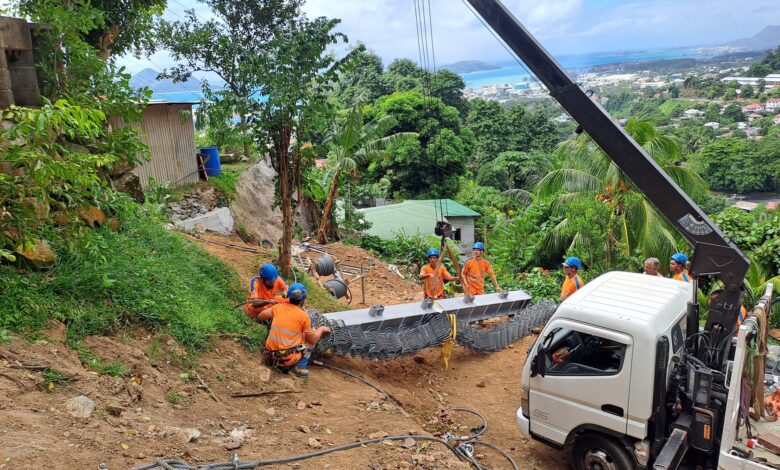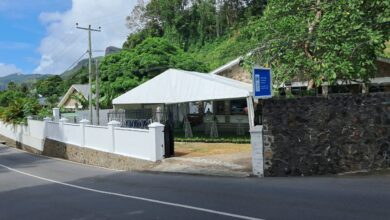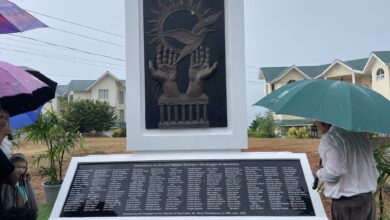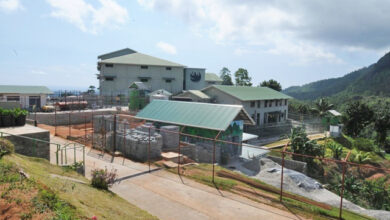St Louis Rockfall Protection Nearing Finish Line—DRMD Says Risk to Lives Greatly Reduced

The Disaster Risk Management Division (DRMD) has announced that the long-awaited St Louis Hill Rockfall Project is almost complete, offering long-overdue reassurance to residents living in one of Mahé’s most landslide-prone zones.
The project, launched in response to the heavy rains of December 6, 2023, targeted three high-risk areas—St Louis, Bel Ombre, and Le Niole—where unstable hillsides posed a serious threat to lives and infrastructure. According to DRMD, the retention system at St Louis is now in its final stages.
“All primary installations have been completed,” said a DRMD official following a series of site visits. “This includes the steel columns, cable frame, and rockfall netting. What remains are the final touches—securing side anchors and applying protective grease to the cables to prevent corrosion.”
The comprehensive installation is designed to reduce the risk of rockfalls, which have plagued the area during past rainy seasons. Officials say this new system will not only improve safety but also restore peace of mind for families living downhill.
The urgency of this project became especially apparent after December’s downpour triggered multiple rockslides across Mahé, damaging property and forcing emergency evacuations. St Louis, in particular, was deemed a priority due to its steep terrain and densely populated slopes.
With the works nearing completion, residents are cautiously optimistic. “We’ve lived under the threat of falling rocks for years,” said one resident. “Now it finally feels like the government is taking our safety seriously.”
Bel Ombre and Le Niole, the other two sites identified in the post-rainfall hazard assessment, are also undergoing similar interventions, though progress varies by location. The DRMD has pledged to maintain transparency and continue monitoring these zones closely throughout the rest of the year.
As the monsoon season looms, many are hopeful that projects like this mark a turning point in how Seychelles manages its growing vulnerability to climate-driven disasters. For St Louis, at least, a long-standing danger may soon be history.




